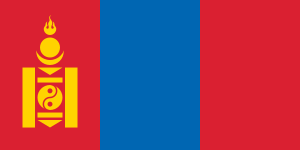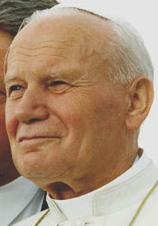Mongolian catholicism: Difference between revisions
No edit summary |
Expanded Mongolian Catholic History |
||
| Line 3: | Line 3: | ||
==Catholicism in Mongolia== |
==Catholicism in Mongolia== |
||
[[Image:JohannesPaulII.jpg|thumb|Right|400px|Pope John Paul II Re-erected the Mongolian Church]] |
[[Image:JohannesPaulII.jpg|thumb|Right|400px|Pope John Paul II Re-erected the Mongolian Church]] |
||
The Roman Catholic Church in Mongolia has some ancient roots in Mongolia, most of them coming through China. The first Catholic mission in Beijing was founded in 1234 by Giovanni de Montecorvino, and by 1300, Catholics numbered to about 30,000. Their presence dwindled, though probably not completely in the succeeding years until the famous [Matteo Ricci]]'s coming and the great spreading of Catholicism that took place while he was at the Chinese Emperor's court. This period ended with anger and division and all missionaries went underground until the Opium War of 1841. , and it was not until 1840, when a Vicariate Apostolic was divided from Beijing that Mongolia had it's own catholic jurisdiction.{{ref|1}} |
|||
==Catholicism in the early 20th century== |
|||
==Communist Rule (1922-1991)== |
==Communist Rule (1922-1991)== |
||
| Line 14: | Line 13: | ||
==Prefecture Apostolic (2003-Present)== |
==Prefecture Apostolic (2003-Present)== |
||
On August 23rd, 2003, Cardinal Crescenzio Sepe (head of the Vatican Congregation for the Evangelization of Peoples) arrived and consecrated Father Padilla as the first bishop of Mongolia, although the country is not yet a diocese. There are now 54 missionaries from various countries helping to build up the church, and 3 functioning parishes. A Mongolian version of the Catholic Bible was printed mid-2004; it is done in traditional Mongolian writing style and includes common catholic prayers.{{ref| |
On August 23rd, 2003, Cardinal Crescenzio Sepe (head of the Vatican Congregation for the Evangelization of Peoples) arrived and consecrated Father Padilla as the first bishop of Mongolia, although the country is not yet a diocese. There are now 54 missionaries from various countries helping to build up the church, and 3 functioning parishes. A Mongolian version of the Catholic Bible was printed mid-2004; it is done in traditional Mongolian writing style and includes common catholic prayers.{{ref|2}} |
||
==Notes== |
==Notes== |
||
http://www. |
http://www.katolsk.no/utenriks/kronologi/mongolia.htm{{note|1}} |
||
http://www.asianews.it/view.php?l=en&art=590{{note|2}} |
|||
==External Links== |
==External Links== |
||
Revision as of 17:12, 26 February 2006

Catholicism in Mongolia

The Roman Catholic Church in Mongolia has some ancient roots in Mongolia, most of them coming through China. The first Catholic mission in Beijing was founded in 1234 by Giovanni de Montecorvino, and by 1300, Catholics numbered to about 30,000. Their presence dwindled, though probably not completely in the succeeding years until the famous [Matteo Ricci]]'s coming and the great spreading of Catholicism that took place while he was at the Chinese Emperor's court. This period ended with anger and division and all missionaries went underground until the Opium War of 1841. , and it was not until 1840, when a Vicariate Apostolic was divided from Beijing that Mongolia had it's own catholic jurisdiction.[1]
Communist Rule (1922-1991)

Mission Sur Iuris (1991-2003)
The new Mongolian Constitution of 1992 guaranteed religious liberty, and missionaries were sent to reconstitute the church. Missionhurst (the Congregation of the Immaculate Heart of Mary) priests were sent to accomplish this mission once the Vatican had established diplomatic relations with Mongolia. By 1996, Father Wince Padilla and 150 parishioners were on hand at the dedication of the first Catholic Church in Mongolian history.
Prefecture Apostolic (2003-Present)
On August 23rd, 2003, Cardinal Crescenzio Sepe (head of the Vatican Congregation for the Evangelization of Peoples) arrived and consecrated Father Padilla as the first bishop of Mongolia, although the country is not yet a diocese. There are now 54 missionaries from various countries helping to build up the church, and 3 functioning parishes. A Mongolian version of the Catholic Bible was printed mid-2004; it is done in traditional Mongolian writing style and includes common catholic prayers.[2]
Notes
http://www.katolsk.no/utenriks/kronologi/mongolia.htm^ http://www.asianews.it/view.php?l=en&art=590^
